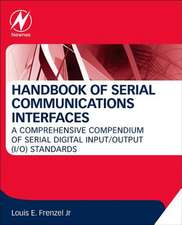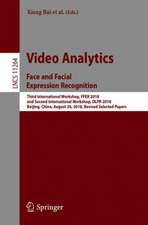Probabilistic Graphical Models for Computer Vision.
Autor Qiang Jien Limba Engleză Hardback – 12 dec 2019
- Discusses PGM theories and techniques with computer vision examples
- Focuses on well-established PGM theories that are accompanied by corresponding pseudocode for computer vision
- Includes an extensive list of references, online resources and a list of publicly available and commercial software
- Covers computer vision tasks, including feature extraction and image segmentation, object and facial recognition, human activity recognition, object tracking and 3D reconstruction
Preț: 435.04 lei
Preț vechi: 579.26 lei
-25% Nou
Puncte Express: 653
Preț estimativ în valută:
83.24€ • 87.15$ • 68.88£
83.24€ • 87.15$ • 68.88£
Carte tipărită la comandă
Livrare economică 29 martie-12 aprilie
Preluare comenzi: 021 569.72.76
Specificații
ISBN-13: 9780128034675
ISBN-10: 012803467X
Pagini: 294
Dimensiuni: 191 x 235 x 27 mm
Greutate: 0.76 kg
Editura: ELSEVIER SCIENCE
ISBN-10: 012803467X
Pagini: 294
Dimensiuni: 191 x 235 x 27 mm
Greutate: 0.76 kg
Editura: ELSEVIER SCIENCE
Cuprins
1. Introduction2. Probability Calculus3. Directed Probabilistic Graphical Models4. Undirected Probabilistic Graphical Models5. PGM Applications in Computer Vision
Recenzii
"The book describes probabilistic graphical models in application to computer vision tasks. The theoretical concepts are accompanied by illustrative figures and algorithms in pseudocode. All the main categories of models are referred to. The applications range from image denoising and segmentation, object detection and tracking to 3D reconstruction and action recognition. It is a book that is valuable for theoreticians and practitioners alike." --zbMath/European Mathematical Society and the Heidelberg Academy of Sciences and Humanities



























